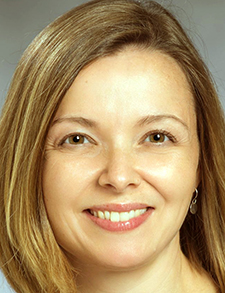
Dr. King
Presenters: Lisa Herrmann, MD, MEd, Tony Tarchichi, MD, and Matthew Molloy, MD, MPH
Drs. Herrmann, Tarchichi, and Molloy discussed their approach to financial health at PHM 2023, a concept important to anyone caring for children, as 76% of medical school graduates have an average debt of $200,000 and start retirement savings 10 years after peers. This is especially crucial for anyone in pediatrics as we rank second to last in medical specialty pay and have an average net worth of less than $500,000. Components of financial health include protecting yourself, mitigating debt, budgeting, and saving for the future.
Protecting yourself—Physicians are in a special employee class with unique skills and health needs. Having your own disability policy is important and many employer plans are only short-term. On average, it is recommended you spend 1-3% of your salary on disability insurance.
It is recommended to consider a life insurance policy that covers 10 to 12 times your salary if you have dependents and/or debts. Term insurance is the cheapest and time-limited. Whole life is more expensive yet can have a cash value and/or be borrowed against. Either way, obtain this while you are young and healthy as it will cost less.
Mitigating debt—Consider the different types of debt you may have (federal, institutional, or private loans, credit cards, housing, etc.) and what your percent interest is on each of these. Prioritize your highest interest rates and/or consider refinancing when economic conditions change. If you have government loans, consider Public Service Loan Forgiveness. With Public Service Loan Forgiveness, after 120 payments, your remaining debt is forgiven. This requires employment verification (must be at a not-for-profit institution), consolidation to a direct loan, and an income-driven repayment plan. For a small amount of input, this strategy can have a large payoff.
Budgeting—The first step is to have one! Consider your savings goals and rank your priorities. This could be an emergency fund (three to six months of salary), a cushion for gaps in employment, or planning for that home, vacation, vehicle, etc. Available tools include websites (banks, consumer.gov), apps (Mint, Goodbudget, EveryDollar, PocketGuard, Honeydue, NerdWallet, and You Need a Budget), and others (spreadsheet, “envelope” system, etc.). Expenses should be categorized into fixed (paid every month) and variable. Consider reining in your variable expenses and avoiding the “I’m a doctor” lifestyle until your finances are under control.
Saving for the future—Options for physicians include IRA accounts, Roth IRAs (with income limits), and employer 401k, 403b, or 457f accounts. All have different plans, and some are matched. It is recommended to get your full match and consider 10% of your income a minimum savings goal. Consider housing and other costs you may have during retirement. These may increase your need for additional savings. A Health Savings Account uses pre-tax dollars for health care expenses and can be invested. After age 65, this can also be used for non-health-related expenses.
The closing portion of this session focused on making your money grow. Remember that time is your friend in investing. The audience was encouraged to make their full employment match and shoot for an investment return of 9%. In simple terms, fund management is divided into active and passive strategies. Active implies taking your dollars and moving them from one place to another over time (i.e., buying and selling stocks). Account fees with this strategy are typically around 1%. Passive investments include items such as buying index funds (S&P, Dow Jones, etc.) and sitting with them over time. Account fees for passive funds average 0.5%. With fees in consideration alone, a passive account will net a $30,000 difference over seven years. In any 15-year period, the U.S. S&P index fund beats 92% of active money managers, with an average rate of 10.3% over the past 50 years, however, there is much year-to-year variability. Other investments to consider include bonds (safer, as a government or company secures them), real estate, precious metals, and art. If you seek out a financial advisor to help you craft your strategy, ensure they are a fiduciary and will work for you, not themselves.
Blogs recommended by this team include the White Coat Investor, The Nomad Partnership Letters, The Memo by Howard Marks, and Berkshire Hathaway Annual Reports. The session concluded with an active Q&A session and contacts shared by the presenting team.
Key Takeaways
- Having a plan is part of the plan. This is true for financial goals, savings goals, and budgeting.
- When considering your financial goals think about your number-one priority and then waterfall your finances to your other priorities. How do you want to save for the future and what goal is next?
Dr. King is a hospitalist, clerkship director, and director of 4th-year student experiences at the University of Chicago. She’s on the executive council for SHM’s Pediatrics Special Interest Group and co-chairs the American Academy of Pediatrics’ section on hospital medicine’s pediatric hospital medicine educators subcommittee.